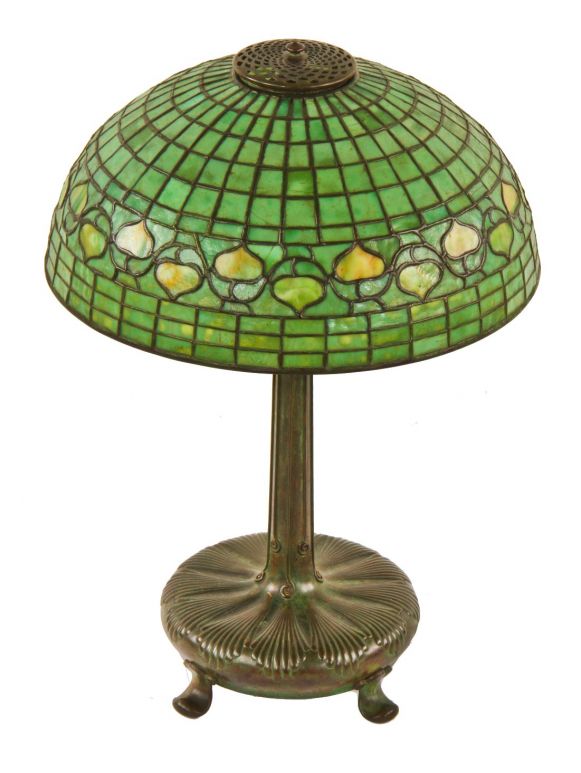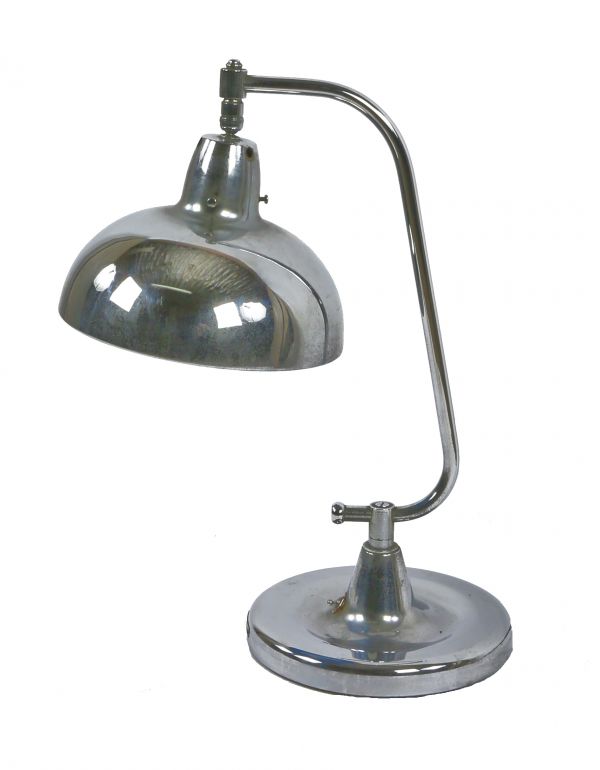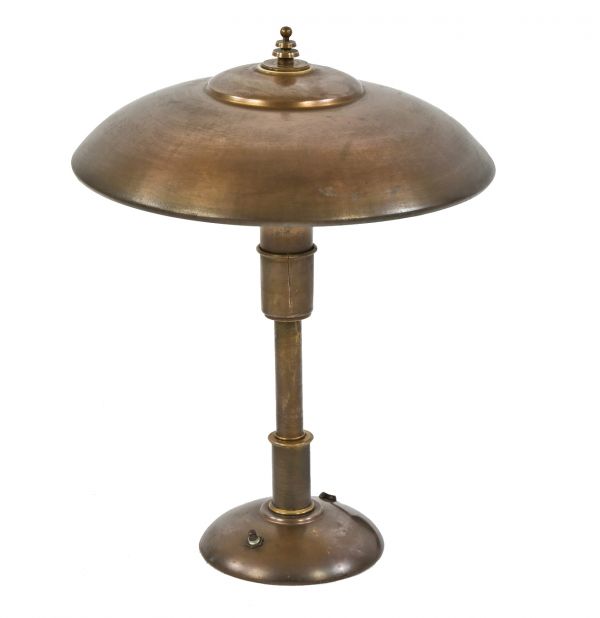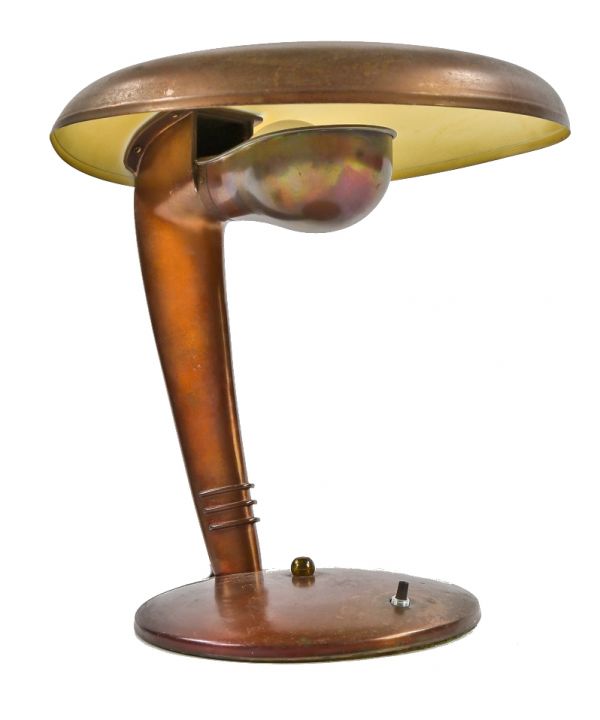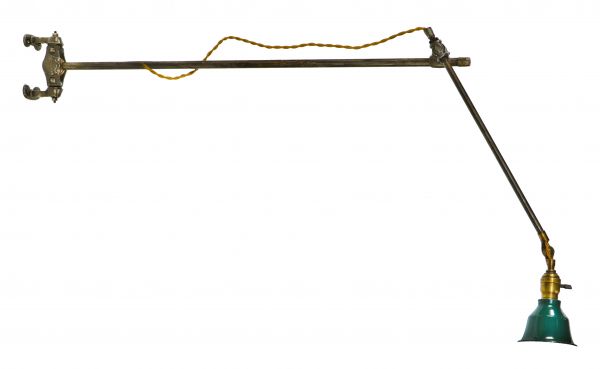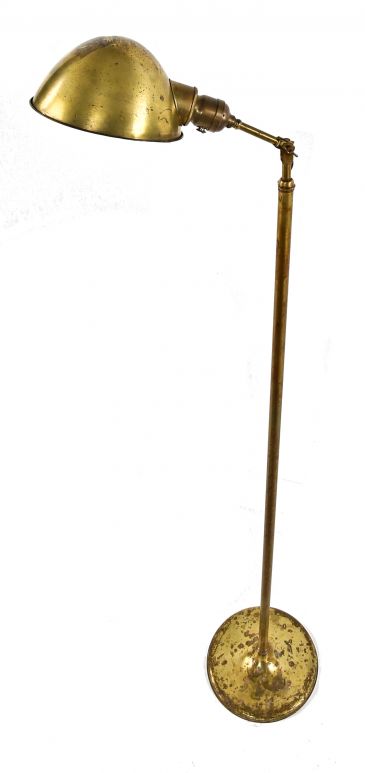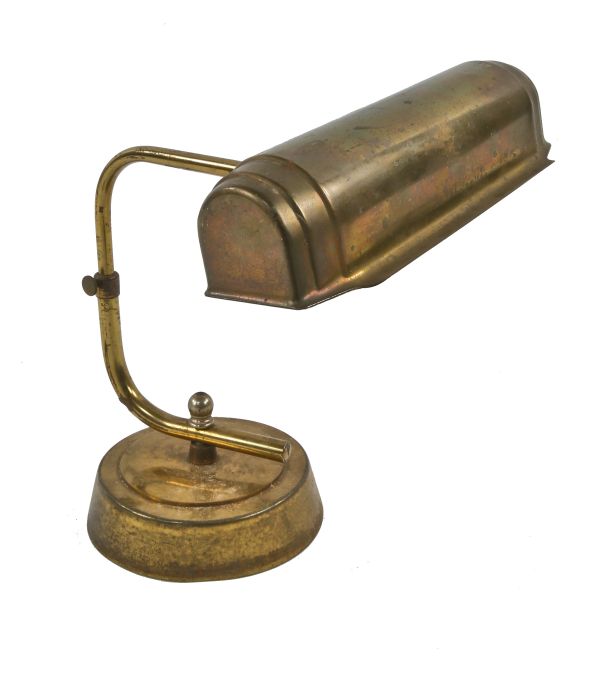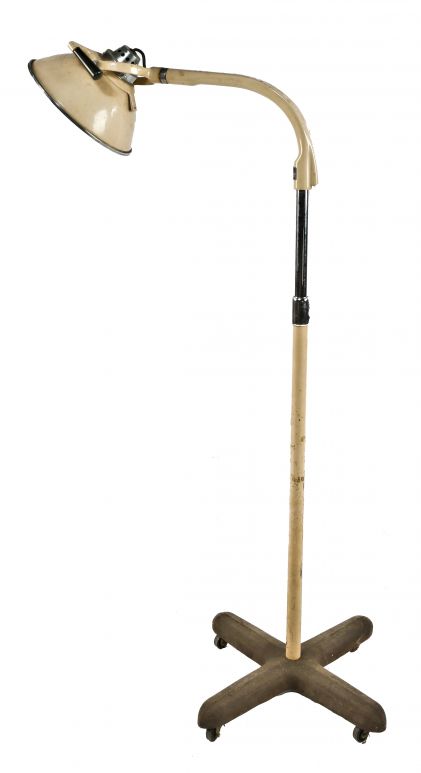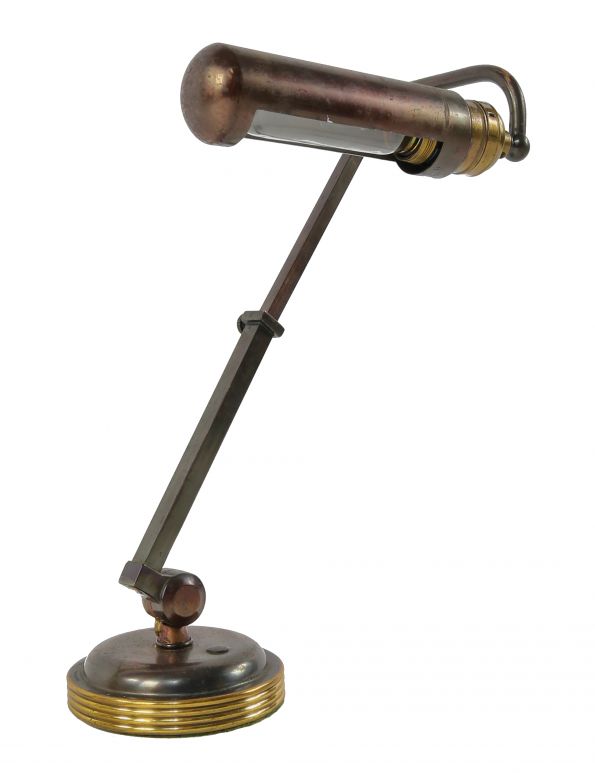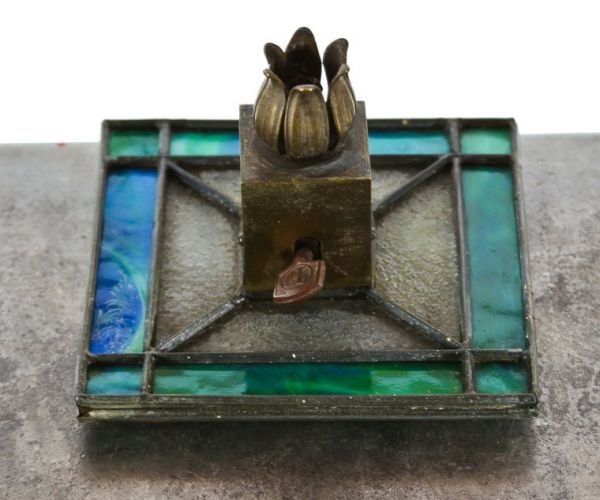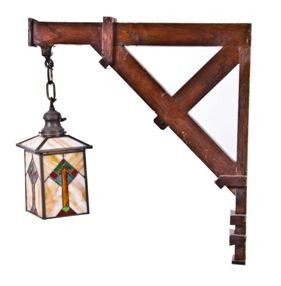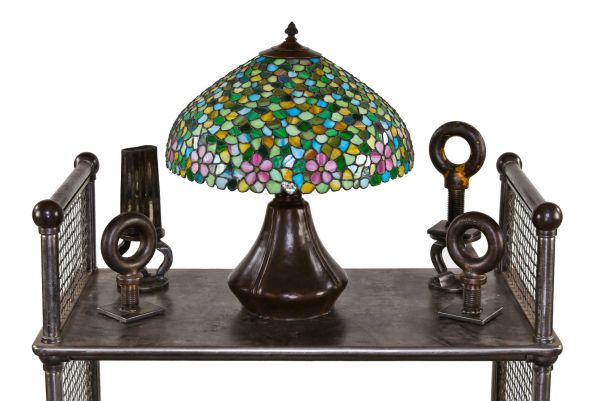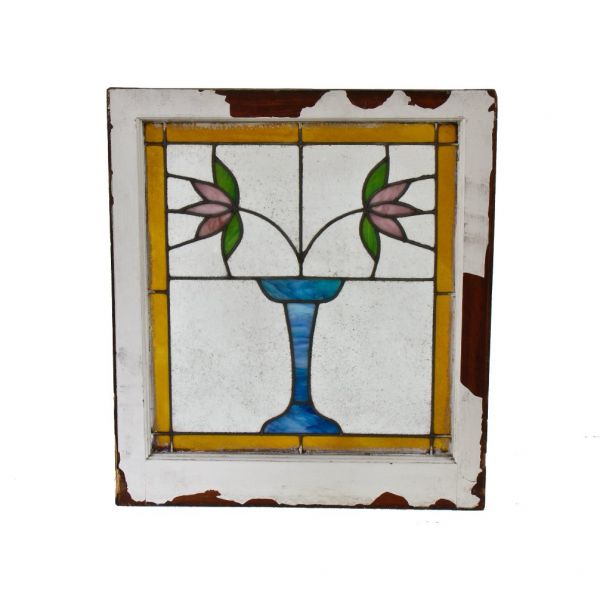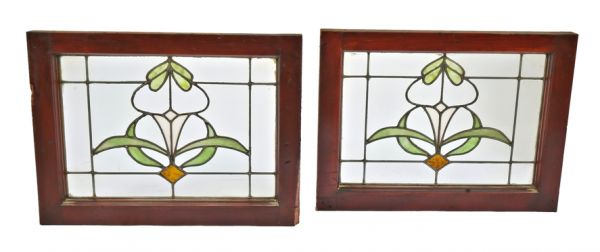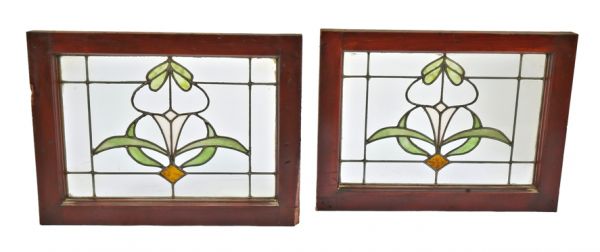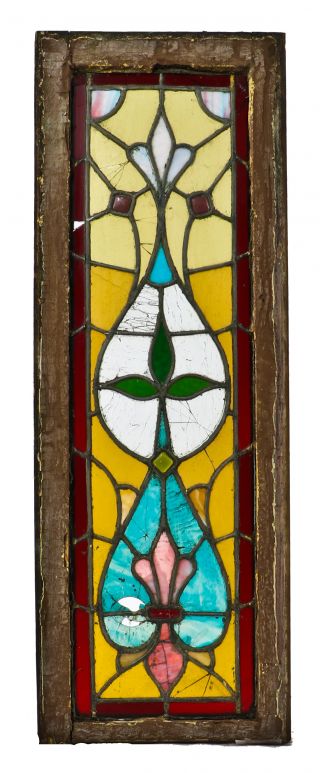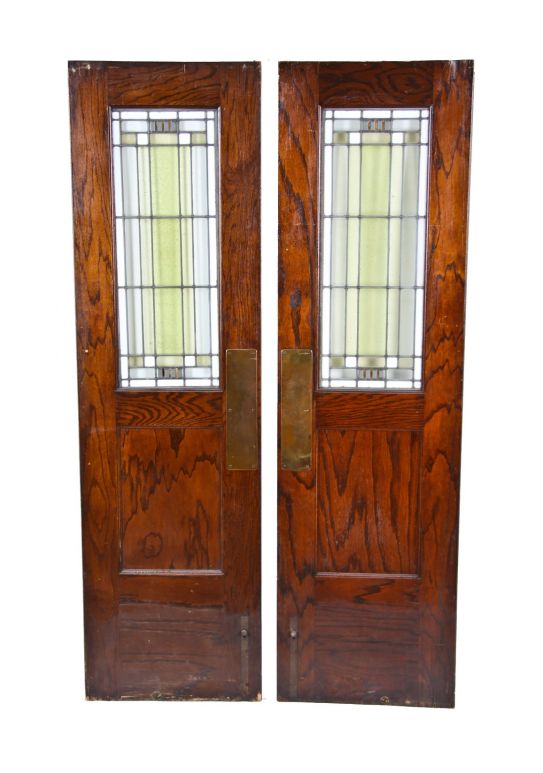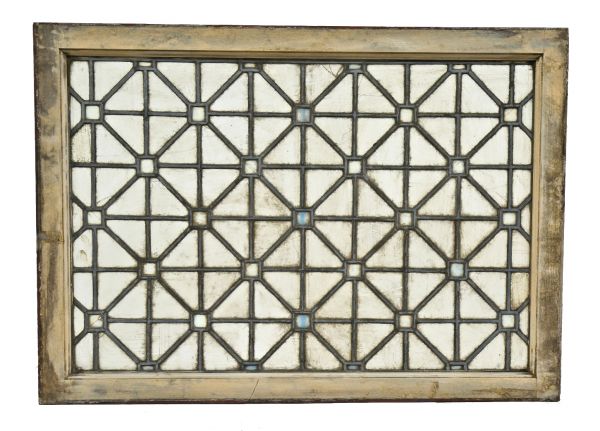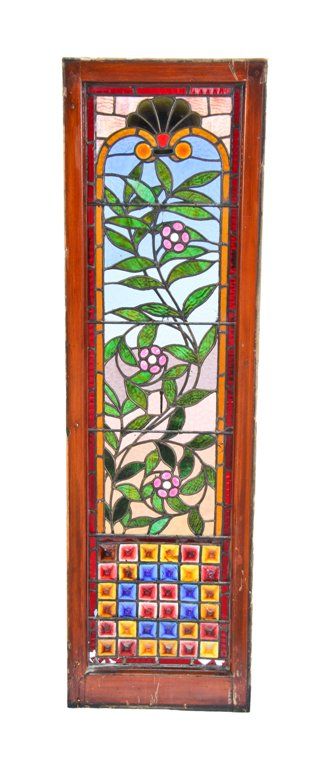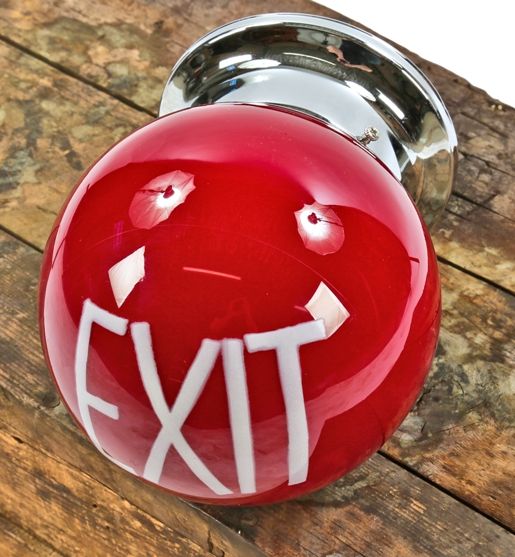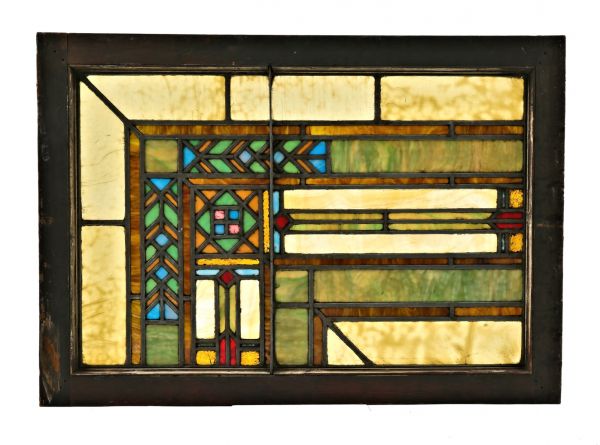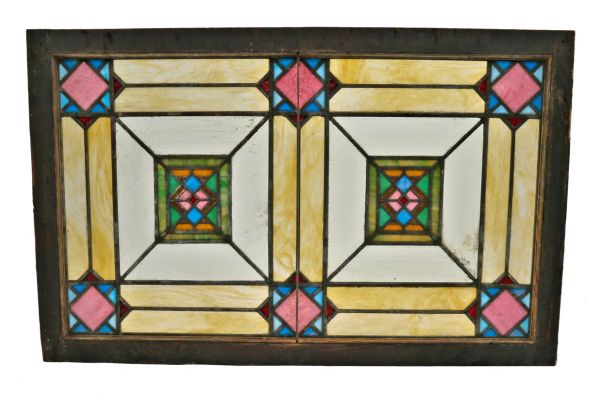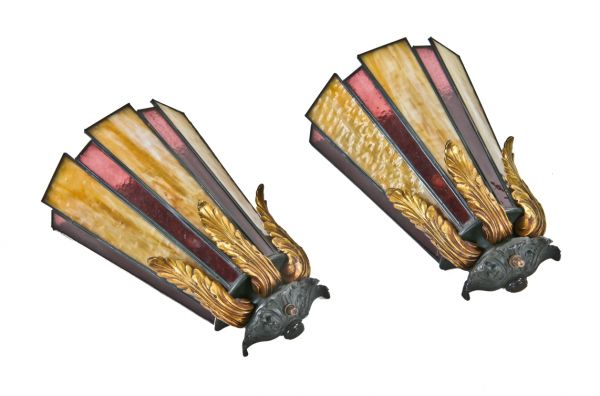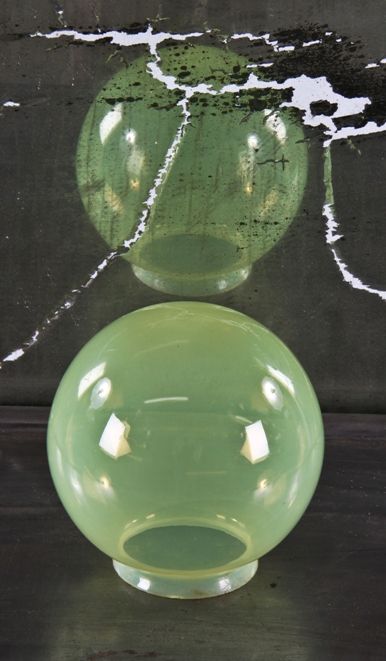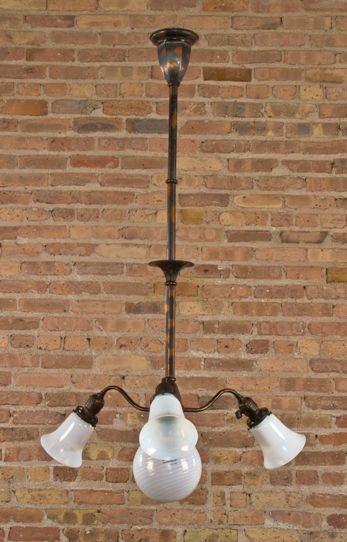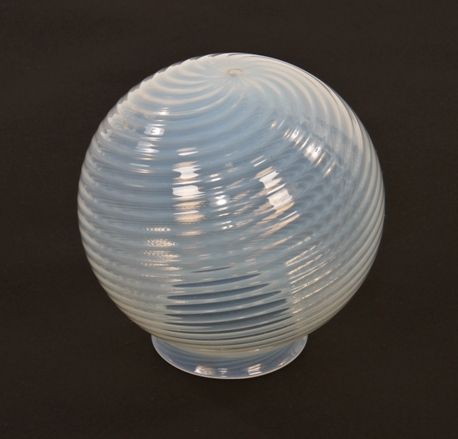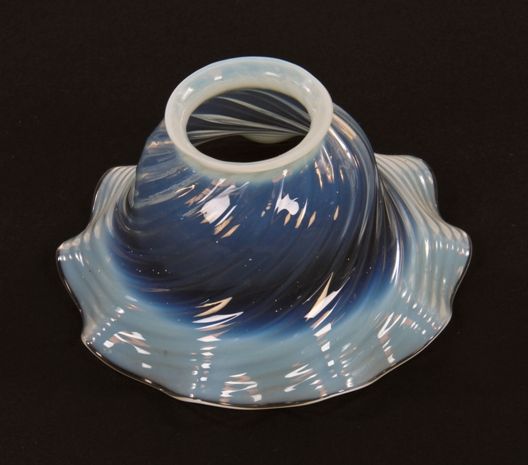signed tiffany studios original and intact favrile art glass electric table or desk lamp with a strongly geometric and brilliantly colored shade featuring a band of acorns
SOLD
Out of stock
SKU
UR-27182-17
tiffany studios, new york city, ny.
sought after early 20th century authentic signed tiffany studios art glass three-light table or desk lamp featuring a simple yet elegant strongly geometric "acorn" pattern shade designed and hand-assembled by tiffany studios, new york city, ny. the highly collectible art glass table lamp features a dome-shaped shade with mottled green rectangular panels surrounding a single band of yellowish-orange acorns arranged in a repeating pattern. the original patinated ornamental cast bronze base features a pedestal profile with floral ornament and three outswept pad feet. the base is stamped "tiffany studios 9922" along the underside. the shade retains the original "tiffany studios new york" stamp along the inner lip. the three general electric paddle sockets and perforated heat cap are original to the table lamp. the three sockets have been rewired. minor hairline cracks within the shade. great overall condition. company founder louis comfort tiffany began as a painter, but became interested in glassmaking in the mid-1870's and worked at several glasshouses in brooklyn between 1875-1878. in 1879, he joined with candace wheeler, samuel colman and lockwood de forest to form louis comfort tiffany and associated american artists. tiffany's leadership and talent, as well as his father's money and connections, led this business to thrive. in 1881 tiffany did the interior design of the extant mark twain house in hartford, connecticut, but the new firm's most notable work came in 1882 when president chester alan arthur refused to move into the white house until it had been redecorated. he commissioned tiffany, who had begun to make a name for himself in new york society for the firm's interior design work, to redo the state rooms, which arthur found charmless. tiffany worked on the east room, the blue room, the red room, the state dining room and the entrance hall, refurnishing, repainting in decorative patterns, installing newly designed mantelpieces, changing to wallpaper with dense patterns and, of course, adding tiffany glass to gaslight fixtures, windows and adding an opalescent floor-to-ceiling glass screen in the entrance hall. the tiffany screen and other victorian additions were all removed in the roosevelt renovations of 1902, which restored the white house interiors to federal style in keeping with its architecture. tiffany's desire to concentrate on art in glass led to the breakup of the firm in 1885, when tiffany chose to establish his own glassmaking firm that same year. the first tiffany glass company was incorporated december 1, 1885 and in 1902 became known as the tiffany studios. in the beginning of his career, tiffany used cheap jelly jars and bottles because they had the mineral impurities that finer glass lacked. when he was unable to convince fine glassmakers to leave the impurities in, he began making his own glass. tiffany used opalescent glass in a variety of colors and textures to create a unique style of stained glass. he developed the "copper foil" technique, which involved edging each piece of cut glass in copper foil and soldering the whole assemblage together to create his windows and lampshades. with this newly created method, he made possible a level of detail previously unknown in the creation and/or use of art glass. tiffany's method can be contrasted with very early tradition of painting in enamels or glass paint on colorless glass, and then setting the glass pieces in lead channels, which had been the dominant method of creating stained glass for hundreds of years in europe (interestingly, the first presbyterian church building (1905) located in pittsburgh, pennsylvania is unique in that it uses tiffany windows that partially makes use of painted glass). use of colored glass itself to create art glass picturesque windows was motivated by the ideals of the art nouveau and arts and crafts movements (the latter being led by william morris in england). fellow highly skilled artists and glassmakers oliver kimberly and frank duffner, of the duffner and kimberly company and john la farge were tiffany's chief competitors in this newly created american style of stained glass. all four of the aforementioned artists had learned their craft at the same glasshouses in brooklyn during the late 1870's. in 1893, tiffany built a new factory called the stourbridge glass company, later called tiffany glass furnaces, which was located in corona, queens, new york. englishman arthur j. nash was charged with overseeing its day-to-day operations. in 1893, tiffany's company introduced the term favrile in conjunction with his first production of blown glass in his new glass factory. early examples of his lamps were exhibited in the 1893 world's fair in chicago and at the exposition universelle (1900) in paris, where he won a gold medal with his noteworthy stained glass window set known as the "the four seasons." tiffany went on to trademark favrile (from the old french word for handmade) on november 13, 1894 and would later apply this word in describing all of his glass, along with enamel and pottery. tiffany's first commercially produced lamps date to around 1895. by this time his company's production was heavily devoted to the production (i.e., design, fabrication and assemblage) of stained glass windows and tiffany lamps, but his studios also designed a complete range of interior decorations. during its peak, the tiffany studios factory employed more than 300 artisans. recent scholarship led by rutgers professor martin eidelberg suggests that a team of talented single women designers led by clara driscoll, played a big role in designing many of the floral patterns on the highly collectible and sought after tiffany lamps.
You Might Also Like
WORDLWIDE SHIPPING
If required, please contact an Urban Remains sales associate.
NEW PRODUCTS DAILY
Check back daily as we are constantly adding new products.
PREMIUM SUPPORT
We're here to help answer any question. Contact us anytime!
SALES & PROMOTIONS
Join our newsletter to get the latest information

